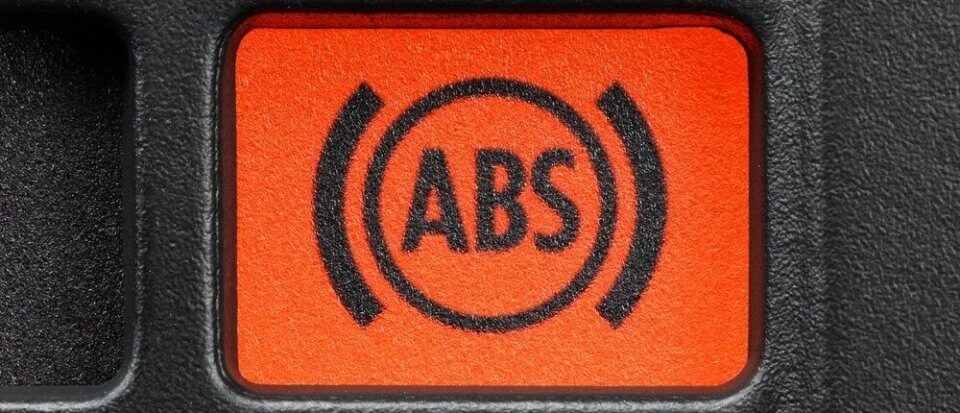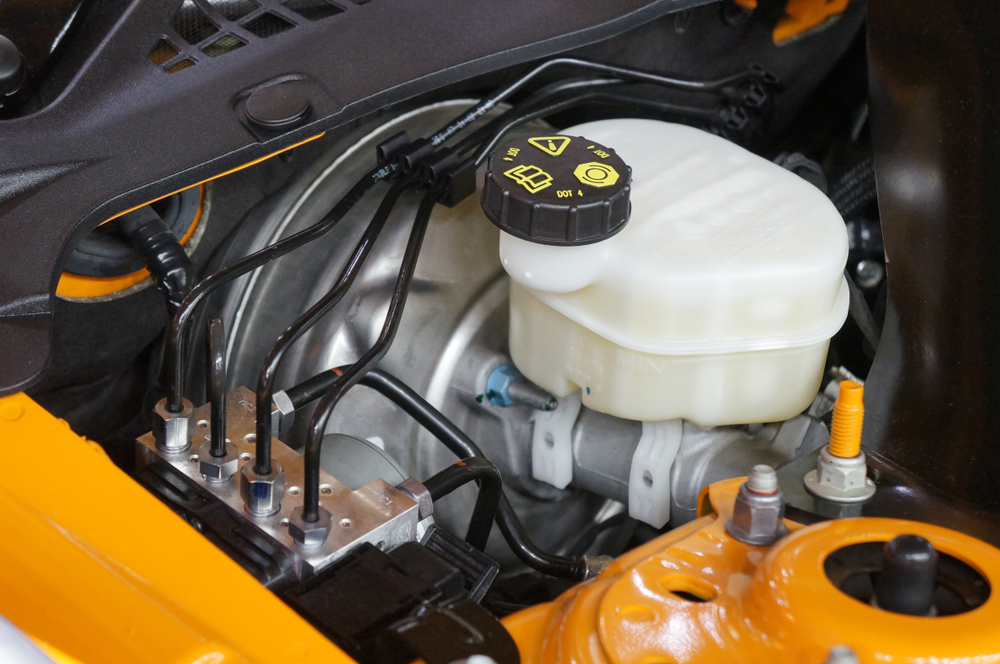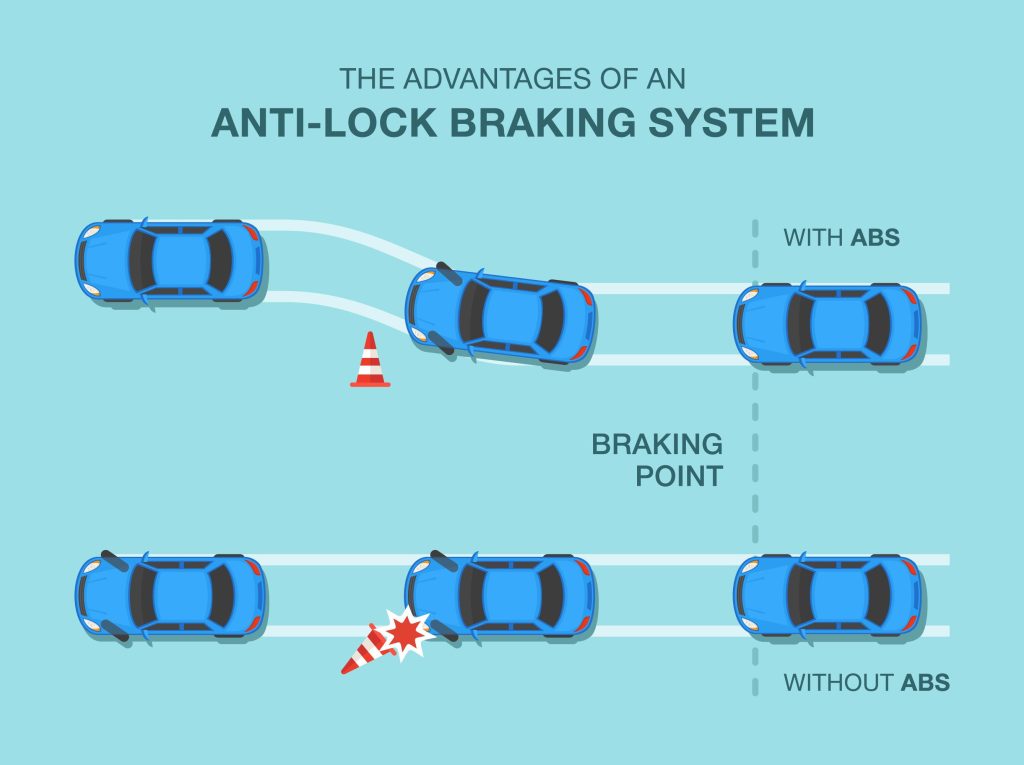
When it comes to the safety of your vehicle, auto insurance is just one piece of the puzzle. Your brakes are possibly your vehicle’s most important feature. Drivers need to have confidence their brakes will allow them to stop suddenly, if necessary, in safe distances. When that happens in less-than-optimal conditions, such as when the road is wet, it can be a frightening experience.
An effective brake system allows you to avoid accidents on the road. Through the 1970s, vehicles utilized drum brakes, but most cars these days have disc brakes. Although the two types have their advantages and disadvantages, both tended to lock up the wheels when the brake pedal is suddenly and forcefully applied. An additional measure was needed to control this tendency, which caused skids and loss of control.
Inventors came up with Anti-Lock Brake Systems (ABS) as a way to combat the skidding and loss of control that happens when a driver slams on the brakes and the wheels lock up. Inventors starting testing a new system on railway cars, aircraft and motorcycle prototypes in the 1950s. In the 1960s, the new technology was introduced with the first 4-wheel drive Formula One vehicle. In 1978, Mercedes-Benz rolled out the anti-lock brake systems on passenger cars.
This helps the driver avoid skidding or losing control by preventing the wheels from locking up during stopping distances. Anti-lock brakes help wheels maintain the proper grip on road surface and reduces the likelihood of driving off the road. It even reduces the risk of a frontal collision on dry or wet roads.
Does My Vehicle Have ABS?
Yes, if you have a model manufactured after 2012, when it became a legal requirement on all new passenger vehicles in the U.S.
If you have an older model, you’ll need to test to see if it is equipped with this safety standard. You can do a test by locating a long, empty stretch of road and then do a sudden, hard stop. If the wheels lock up, then you do not have it.
If it isn’t, there are some things you can do to alleviate the risk of your wheels locking up during a sudden, hard braking emergency situation. For example, you can use what is called “cadence” braking, where you can press the brake pedal very forcefully as fast as you can. This will simulate what it does and help you to stop without locking up your wheels and going into a skid.
Just keep in mind that, if you do this too often, you can do damage in the long run. This is only for an emergency situation and, hopefully, you won’t be in one of those very often.
How Does an Anti-Lock Brake System Work?

Anti-lock brakes are part of the vehicle’s electronic stability program. The electronic stability program monitors balance and wheel speed via sensors attached to each wheel. The wheel speed sensors detect when wheels are close to locking up and send a message to the ABS controller to release for a short moment. This prevents the brakes from locking.
The controller can release and apply brake pressure for up to 20 times per second. The system is comprised of five components, including:
- Wheel speed sensors – if one wheel is slowing down more rapidly than the rest, it could be an indication of the wheels locking up.
- Brake calipers – the mechanism by which the stopping motion of a brake is enforced. The controller directs the brake caliber to loosen its grip.
- Hydraulic system – The controller works with hydraulic pressure to operate the hydraulic system in the brake lines.
- ABS pump – This pump is designed to restore lost hydraulic pressure to the brakes after the valves have released it, controlling the amount and timing of pressure.
- Computer or controller – coordinates everything
To put it simply, the controller ensures that each wheel offers optimal brake pressure. This keeps you much safer when you need to apply the brakes when driving.
Additional Features and Add-ons
There are two ABS systems, the three channel and four channel. Three channel systems work on both front wheels independently, but real wheels as one unit. Four channel systems work on each wheel independently. The four channel system is the best safety system, since the rear wheels are monitored independently.
The traction control system is an add-on that helps improve traction control when the vehicle is accelerating on a wet or slippery road surface or through snow.
The Electronic Stability Control is a helpful partner. Electronic stability control works behind the scenes in conjunction with the steering wheel and the speed sensors on each wheel.
What is the ABS Light?
The ABS light, or lamp, is designed to light up on your dash if there is a problem with the anti-lock brake system. You can still drive if the ABS light comes on, but avoid situations where sudden braking may be necessary. The ABS lamp indicates an issue, such as:
- A weak battery may cause the ABS light to come on
- Low brake fluid (you can check this yourself and fill it up)
- An issue with your wheel sensors (you’ll need a voltmeter for this)
- Blown ABS control fuses
- An issue with the controller. This may need professional help to check.
Obviously some of these will call for a professional. The ABS light on the dash indicates a safety systems issue that may affect other systems if left unchecked. Some of these are traction control, cruise control and even the transmission.

Safety Tips to Brake Properly in Different Conditions
Even though anti-lock brakes reduce mishaps, you still need to follow safety tips when driving in certain conditions. These safety tips will further reduce the likelihood that you’ll be in an accident.
When driving on a slippery road, you’ll need to take special care to avoid an accident. Brake gently on a wet, icy road. Also, if you’re about to go around a bend, brake on the straight. This will power your vehicle down, making it easier to control.
You will also encounter wet roads from time to time. If hydroplaning is a cause for concern, you can avoid this by driving and braking in the tracks in front of you and avoiding puddles if possible.
You also might skid when driving on a wet, slippery road. Fight off the urge to brake when this happens. Instead, remove your foot from the accelerator, letting your auto power down naturally. Then, move your steering wheel in the desired direction. Your vehicle will begin to travel in a straight line again if you use this strategy.
Keep in mind that loose gravel may also affect your ability to safely drive.
Your vehicle’s ABS helps you stay safe on the road, but it can’t do it all. You also need to follow safety tips to avoid accidents. Between these tips and the anti-lock brakes, you are much less likely to suffer from injuries due to a severe car accident.
Find Affordable Auto Insurance Online to Help You Stay Safe
Freeway Insurance can help you make the process of finding car insurance online fast and easy if you’re ready to get on the road. Compare rates from top providers and save on your car insurance. Don’t wait any longer, start your quote online, over the phone at (800) 777-5620 or visit one of our offices today.



